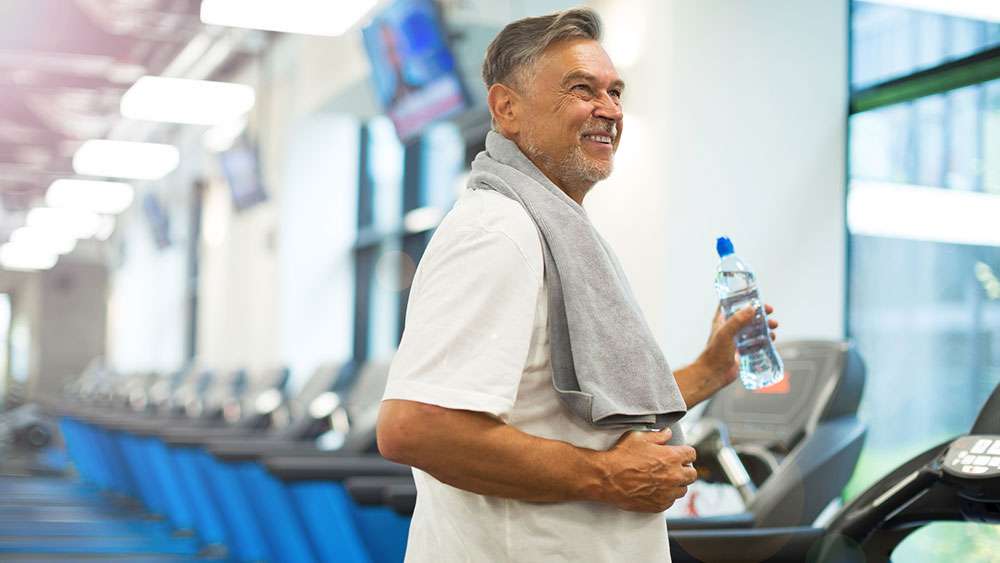
Chronic pain is a widespread problem, affecting millions of people worldwide. Various factors, including injury, illness, and age, can cause pain.
While there is no single cure for chronic pain, many non-pharmaceutical alternative treatments can help to manage it. One of the most effective treatments for chronic pain is exercise.
The Benefits of Exercise in Chronic Pain Management
Engaging in regular exercise offers many benefits for individuals experiencing chronic pain. These benefits include:
- Improved Pain Tolerance: Regular physical activity stimulates the production of endorphins, which act as natural painkillers.
- Increased Strength and Flexibility: Exercise can help to strengthen the muscles and improve flexibility, which can help to reduce pain and improve function.
- Reduced Inflammation: Exercise can help reduce inflammation, a common cause of pain.
- Positive Psychological Effects: Exercise can help to improve mood, which can also help to reduce pain.
- Increased Energy Levels: Exercise can help increase energy levels, making it easier to cope with chronic pain.
- Improved Sleep: Exercise can help improve sleep, another important factor in managing chronic pain.
Clinical Evidence Supporting Exercise for Chronic Pain Management
Numerous clinical studies find substantial evidence to support the role of exercise in controlling chronic pain. These studies have focused on various chronic pain conditions, including low back pain, fibromyalgia, osteoarthritis, and neuropathic pain. Some of the findings include:
- The “Journal of Pain” review of 36 studies found that exercise effectively reduced pain intensity and improved physical function for chronic musculoskeletal pain.
- The results of a trial published in “Arthritis Care & Research” demonstrated that exercise significantly reduced pain severity and improved physical function in patients with knee osteoarthritis.
- A study published in the “Annals of Internal Medicine” found that aerobic exercise and strength training effectively reduced pain and improved symptoms in individuals with fibromyalgia.
These studies and others support exercise as an essential component of comprehensive chronic pain management.
What Type of Exercise is Best for Chronic Pain Management?
There is no one-size-fits-all answer to this question, as the best type of exercise for chronic pain will vary from person to person. However, some general guidelines include:
- Start slowly and gradually increase the intensity and duration of the workouts.
- Choose low-impact activities that do not put too much strain on joints.
- Warm up before exercising and cool down afterward.
- Listen to your body and stop if you experience pain.
Some examples of low-impact exercises that are good for people with chronic pain include:
- Walking
- Swimming
- Cycling
- Yoga
- Pilates
- Tai chi
Designing an Exercise Program for Chronic Pain Management
An exercise program for individuals with chronic pain requires careful consideration of individual needs, limitations, and preferences. It is essential to work closely with healthcare professionals specializing in chronic pain management for guidance in tailoring a program that meets specific goals for the patient.
The amount of exercise will depend on the patient’s specific needs and goals. However, most experts recommend that people with chronic pain get at least 30 minutes of moderate-intensity exercise most days.
Typically, the exercise program should include aerobic exercises, strength training, flexibility exercises, and functional movements. It is crucial to start at an appropriate intensity and gradually progress to avoid exacerbating pain or causing injury. Regular monitoring ensures continued effectiveness and safety.
Starting an Exercise Program
Always consult your doctor before starting an exercise program.
Here are some tips for starting an exercise program:
- Set realistic goals. Don’t try to do too much too soon. Start with short, easy workouts and gradually increase the duration and intensity.
- Find an enjoyable activity. If the activity is not enjoyable, the less likely you will stick with it. There are many different types of exercise, so find one that is fun and challenging.
- Make exercise a daily routine. Schedule exercise time just like you would any other important appointment.
- Find a workout buddy. Exercising with a friend or family member helps with motivation and accountability.
- Don’t give up. Stay in close contact with your doctor and modify your exercise routine as needed.
Exercise is an essential part of managing chronic pain. It holds immense potential as a non-pharmacological and effective approach to chronic pain management. By understanding the science behind exercise and its impact on pain perception, incorporating suitable exercises, and seeking professional guidance, it is possible to develop a comprehensive exercise plan to alleviate pain, improve physical function, and enhance overall well-being. Consistency and patience are key.
Novus Spine & Pain Center
Dr. Torres established Novus Spine & Pain Center in Lakeland, Florida, with the goal of providing the highest quality pain management care to every patient. Whether pain is the result of an injury or from another condition, Dr. Torres offers many different treatment options.
Novus Spine & Pain Center utilizes a comprehensive approach and cutting-edge therapies to restore normal function and allow patients to regain an active lifestyle while minimizing the need for opiates. As our patient, you are our top priority. Our goal is to help you achieve the best possible quality of life.
Our Mission Statement: To provide the best quality of life to people suffering from pain by providing state-of-the-art treatments, knowledge and skill, compassion, and respect for all.
For your convenience, you may schedule an appointment online, request a call back, or call our office at 863-583-4445.
Exercise in Chronic Pain Management Resources
Exercise helps ease arthritis pain and stiffness (Mayo Clinic)
Motion is The Potion (Trinidad Y Tobago Guardian)
Chronic Pain (Exercise & Sports Science Australia)
Does exercise increase or decrease pain? (PubMed)
Physical activity and exercise for chronic pain in adults: an overview of Cochrane Reviews. (PubMed)
Exercise and Chronic Pain (Healthtalk)
Benefits of Physical Activity (Centers for Disease Control and Prevention)

